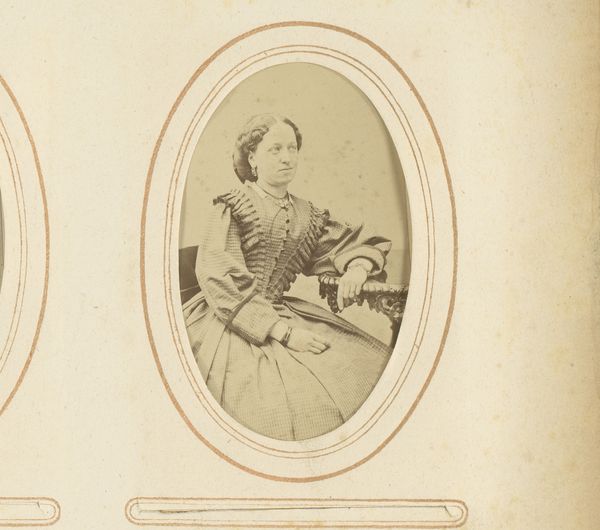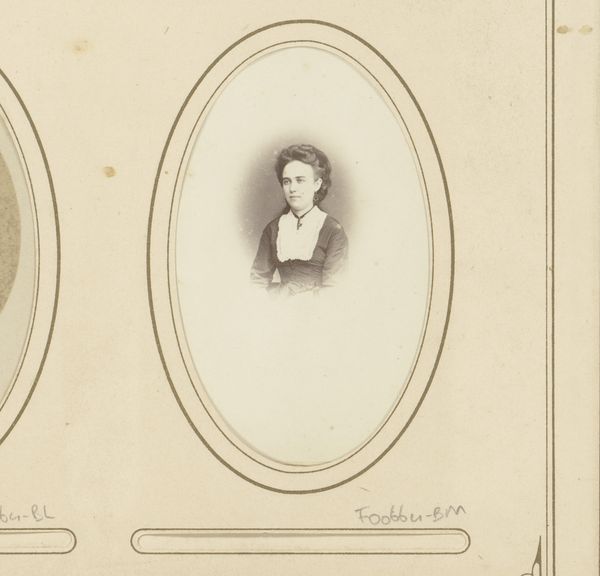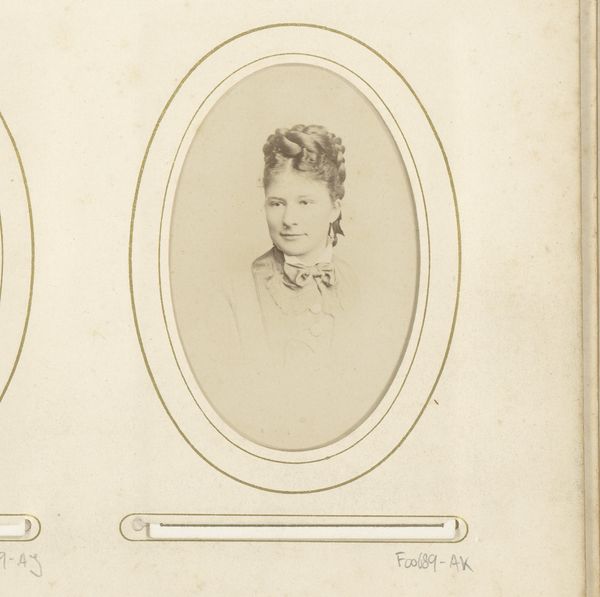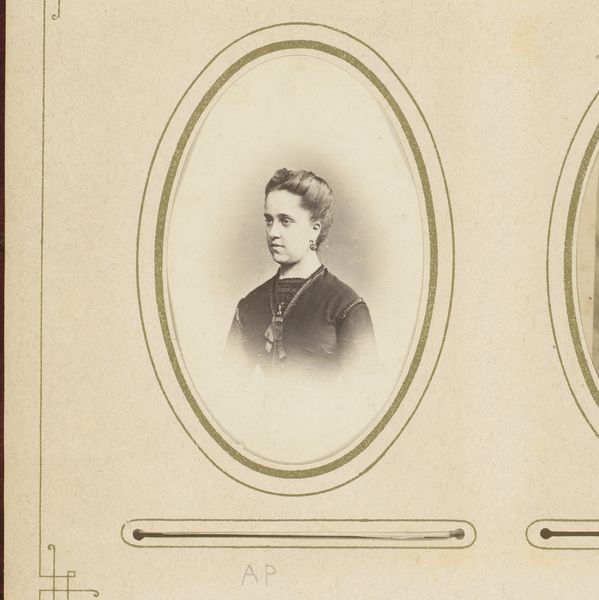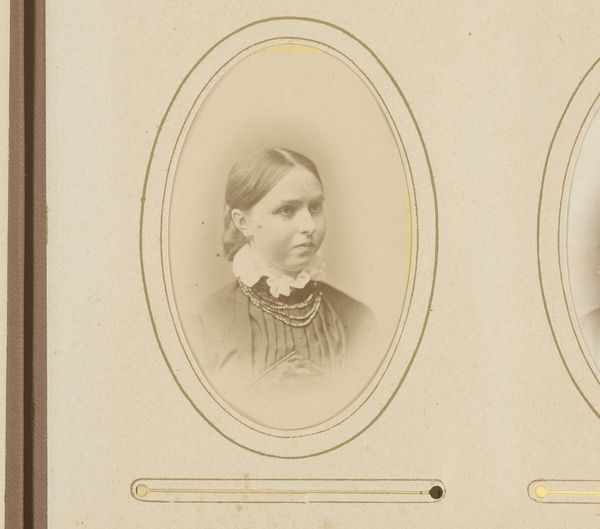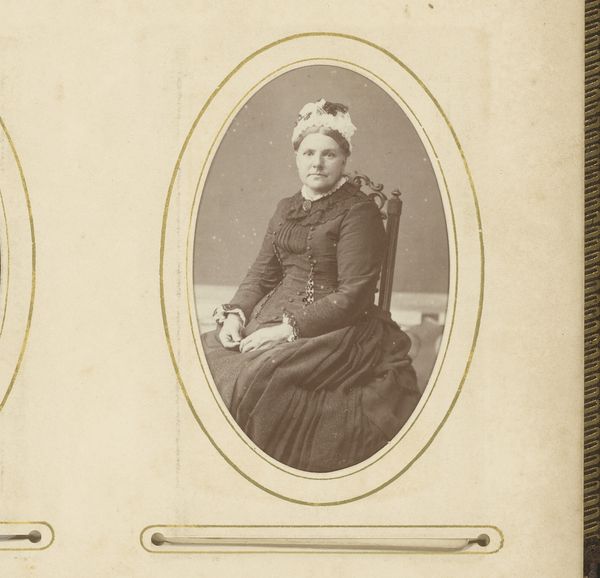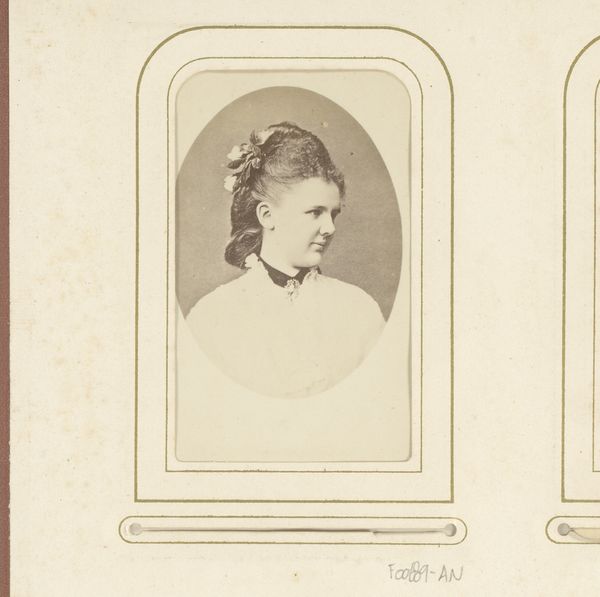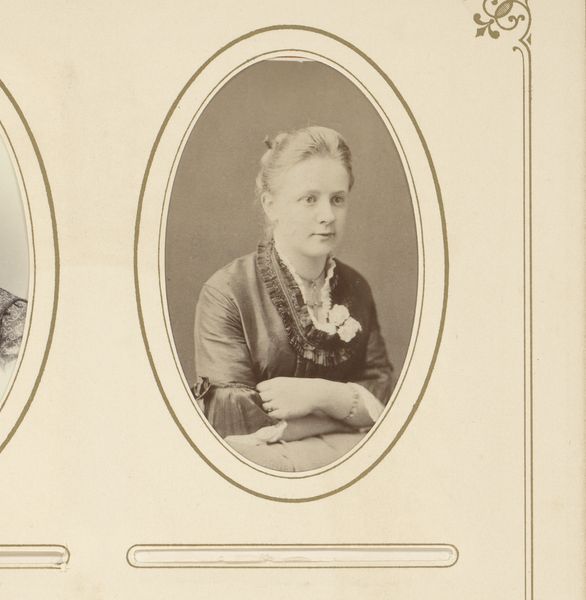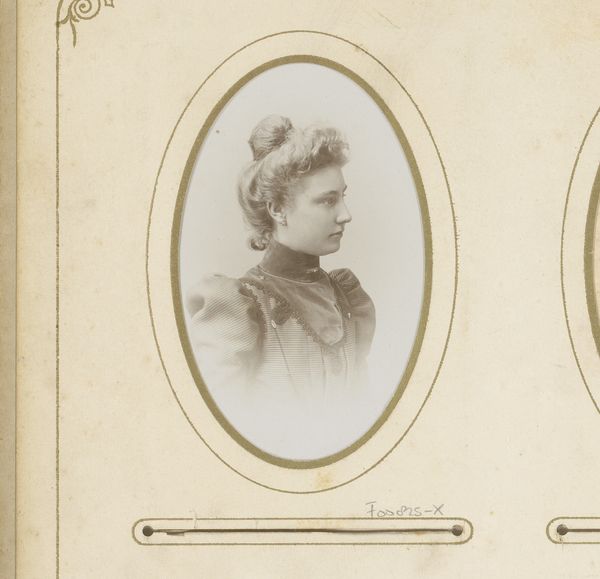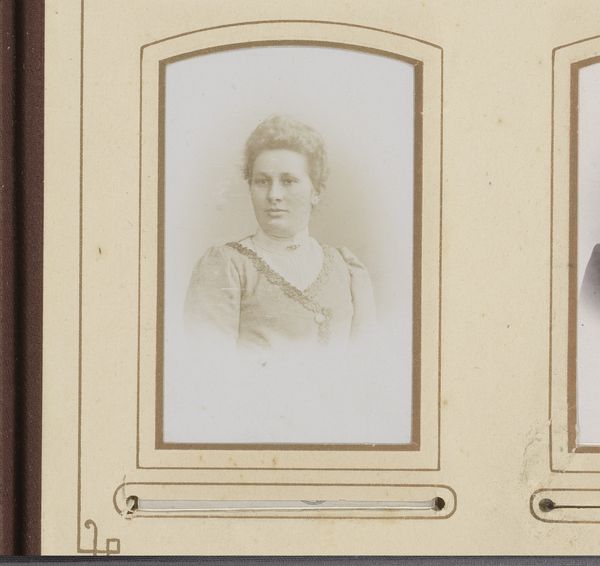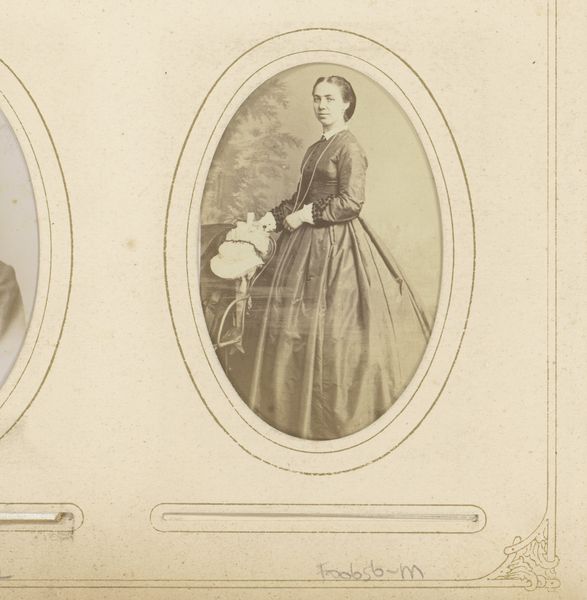
photography, albumen-print
#
portrait
#
photography
#
historical photography
#
genre-painting
#
albumen-print
Dimensions: height 81 mm, width 49 mm
Copyright: Rijks Museum: Open Domain
Editor: Here we have “Portret van een zittende jonge vrouw,” or "Portrait of a Seated Young Woman," taken sometime between 1860 and 1900 by Wegner & Mottu. It's an albumen print photograph, giving it this lovely sepia tone. I’m really struck by how reserved and poised she seems. What symbols or narratives jump out at you in this image? Curator: The oval frame itself is the first symbol that strikes me. It recalls cameos, miniatures, even eggs—suggesting preservation and preciousness. Oval frames like this one can signify containment and controlled identity. Now, observe how the sitter's gaze is directed—she looks slightly off to the side. Where is *her* gaze taking us? Editor: That's interesting – it almost creates a sense of mystery, like she's considering something beyond the frame. Curator: Precisely! Consider, too, her dress. It is not overtly ornate, but possesses a distinct, respectable style. Clothing then signaled social standing and aspirations. Doesn’t it say something about self-presentation and societal expectations? It suggests an intersection between individuality and conforming to a cultural moment. Editor: It's a quiet rebellion, maybe? A statement made through subtle details? Curator: Indeed. Even her seated posture – carefully posed, hands clasped. Each element constructs a deliberate visual language. What secrets do *you* think are held within this carefully crafted representation? Editor: I never thought about portraiture containing so much visual language before. Thanks! Curator: It's a layered medium, inviting us to decipher its meanings, reflecting how symbols change, and remain constant across time.
Comments
No comments
Be the first to comment and join the conversation on the ultimate creative platform.
